The line between inner and outer life is becoming increasingly blurred. Adding artwork to your outdoor space can be a problem if the artwork cannot withstand the natural elements. By creating your own work of art and finishing it off with the right sealer, you can add a splash of color and style that blends perfectly with your overall exterior appearance.

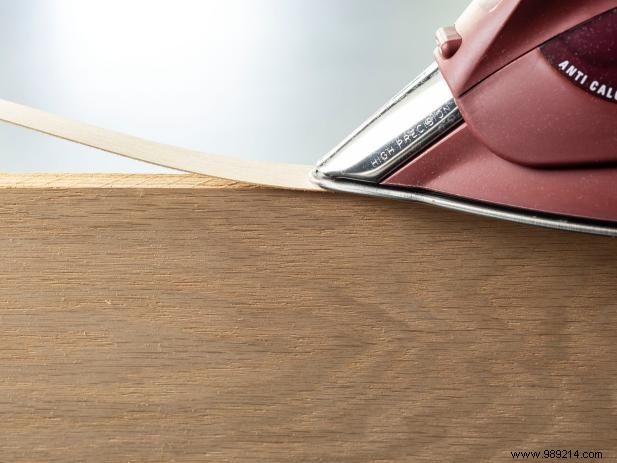
Sam Henderson
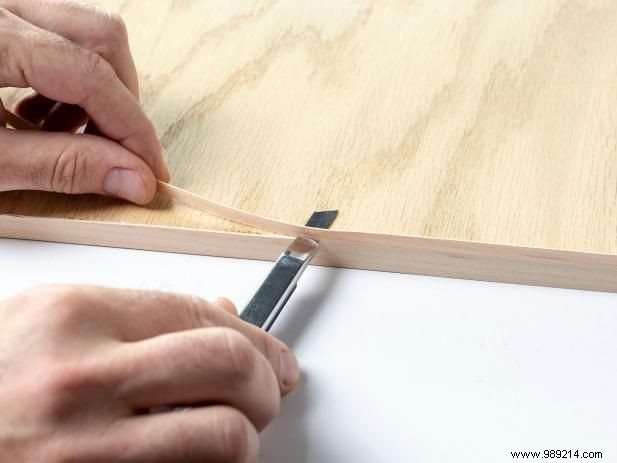
Sam Henderson
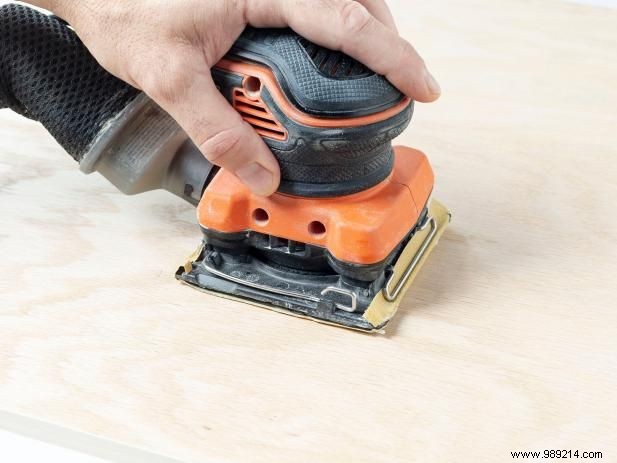
Sam Henderson
From:Sam Henderson From:Sam Henderson From:Sam Henderson
Cut a length of plywood for each 1/2" side of the board. The lengths should be about one inch longer than the side it will be applied to. With an iron on a high setting, press the veneer into place following the manufacturer's instructions instructions (Image 1). Allow the veneer to extend past each of the edges where it is being applied. When the veneer has adhered and cooled, cut off the excess at each end. Repeat for pieces remaining sheet metal..
Use a utility knife to trim off excess veneer on the front and back of the board (Image 2). Press the knife blade against the surface of the wood so that the veneer is flush with the surface of the board. Sand the entire surface, including the veneer, and all the edges to smooth them out a bit (Image 3). Wipe the board with a tack cloth or slightly damp paper towel to remove sawdust.
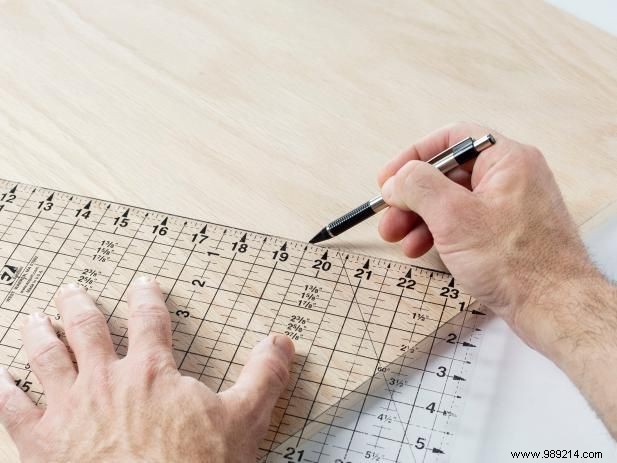
Sam Henderson

Sam Henderson
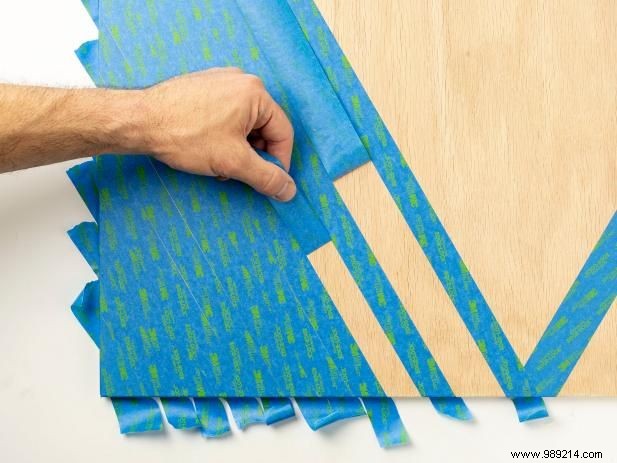
Sam Henderson
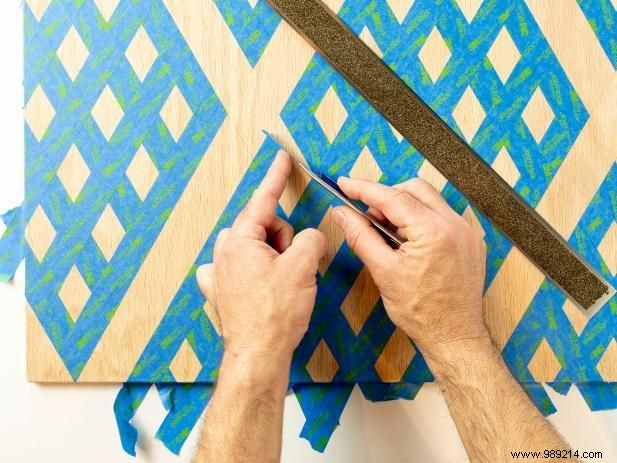
Sam Henderson
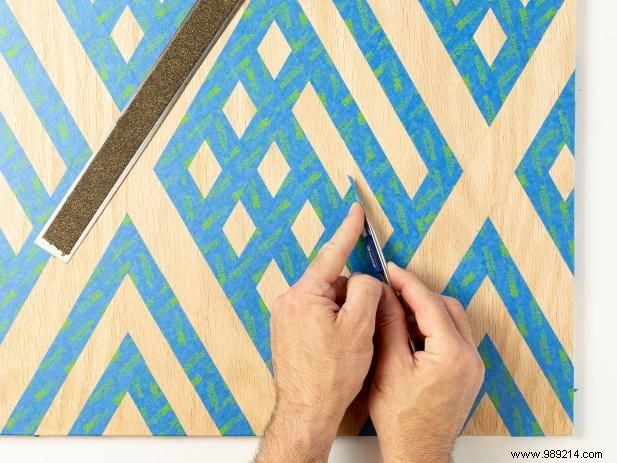
Sam Henderson
From:Sam Henderson From:Sam Henderson From:Sam Henderson From:Sam Henderson From:Sam Henderson
Use a seam ruler or protractor to draw a line counterclockwise 60˚ to the bottom of the board (Image 1). Start the line at the bottom of the board, 13" from the left side. Place a 1-1/2" piece of painter's tape on the board with the left side of the strip against the pencil line. Draw another line to the right 60˚ to the bottom of the board starting at the point where the right side of the tape you added meets the bottom of the board. Add a 1-1/2" piece of tape with the left side of the tape against the second line. Your tape should create a V (Image 2). Starting with the tape on the left side of the board, begin adding strips of tape 1" tape on both sides of the 1-1/2" tape, with the edges of the tape against the previous piece of tape Add nine strips of 1" tape before adding another strip of 1-1/2" tape. Repeat process until entire board is covered. Remove 1-1/2" tape pieces (except the one pointing the other direction. Leave all 1-1/2" tape pieces " that are now next to a 1-1 The /2" space is in place, but remove every second piece in between, forming stripes (Image 3). Repeat this process in the opposite direction using the 1- 1 / 2 that placed at the beginning.
Next, use a utility knife and ruler to cut any 1" piece of tape that crosses one of the 1-1/2" gaps. The result should be diamond grids (Image 4). Inside each of the grids, cut the ribbon to create three inverted V shapes and a diamond at the bottom (Image 5). Lastly, press all the edges of the tape against the board again to prevent the paint from bleeding underneath.
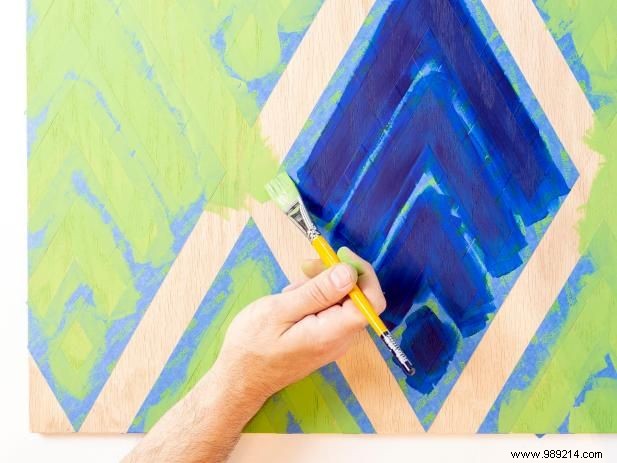
Sam Henderson
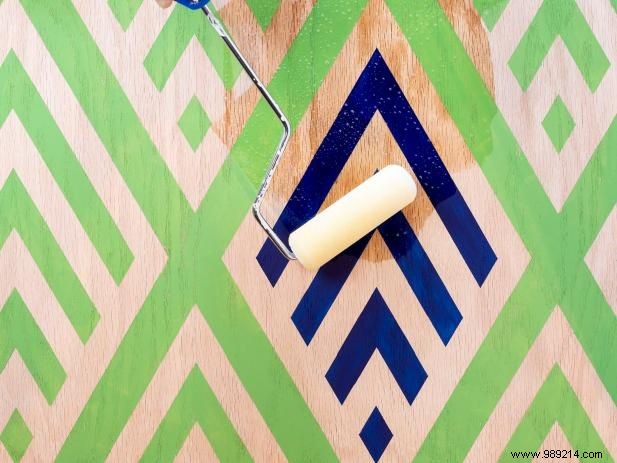
Sam Henderson
From:Sam Henderson From:Sam HendersonDetermine which two arrowhead patterns will be painted in the accent colors, and paint the first ones with a small brush. The remaining untrimmed spaces should be filled with the base color (Image 1). Let the paint dry completely, then remove the painter's tape. Slowly move the neck varnish over the front and side edges of the board (Image 2). When dry, apply a coat of varnish to the back of the board. Let the board dry completely before hanging or standing outdoors.
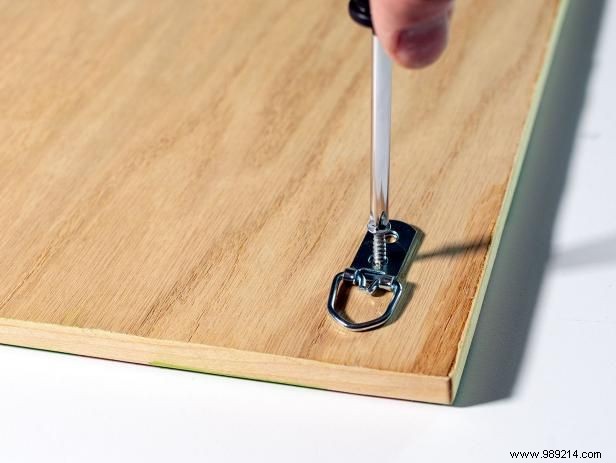
Sam Henderson
Attach two D-rings to the back of your artwork and hang it proudly.
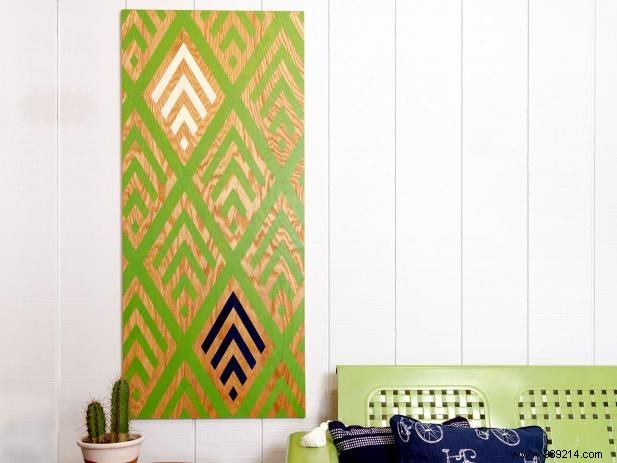 Continue reading
Continue reading